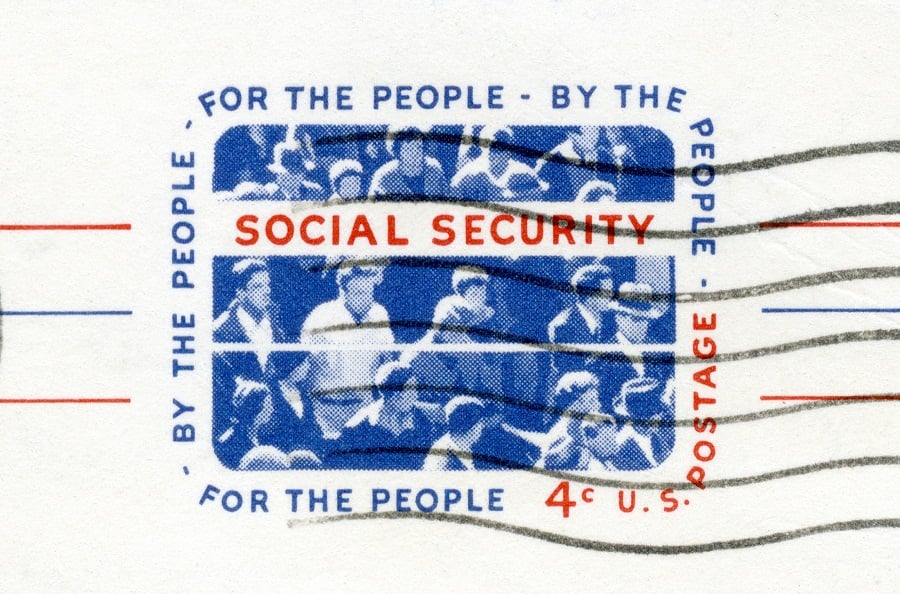A lot has changed since Congress approved major reforms to Social Security rules more than 35 years ago. Life expectancy has increased. Interest rates have declined. And inflation has transformed the taxation of Social Security benefits from a class tax to a mass tax, according to two new reports.
The result is Social Security now pays relatively higher lifetime benefits to wealthier retirees who can afford to delay claiming their benefits, and middle-income retirees are now shouldering more of a tax burden because the income thresholds for taxing benefits were never indexed for inflation.
Roughly half of all retiree households report that a portion of their Social Security benefits is subject to taxation, according to recent survey results from The Senior Citizens League.
To determine if a portion of the taxpayer's Social Security benefits is taxable, half of Social Security benefits are added to adjusted gross income, plus any tax-exempt interest, to calculate "combined income." Individuals who have combined incomes of $25,000 or more and married couples with combined income of $32,000 or more are subject to income taxes on up to 85% of their Social Security benefits.
"This is a tax that was estimated to affect just 10% of Social Security beneficiaries when it was first enacted in 1983," said Mary Johnson, a Social Security and Medicare policy analyst for TSCL. "Today, the Social Security benefits of even modest-income retirees are affected by the tax."
Had the income thresholds been adjusted for inflation since the 1983 enactment, the $25,000 threshold would be about $63,137 today, and the $32,000 threshold would be about $80,815, based on the Bureau of Labor Statistics' inflation calculator, Ms. Johnson said.
Legislation currently under consideration in Congress would adjust the income thresholds for taxing Social Security benefits. The
Social Security 2100 Act would raise the current $25,000 threshold for individuals to $50,000 and boost the current $32,000 threshold for married couples to $100,000.
The bill, supported by 55% of participants in the TCSL survey, would offset the lost tax revenue by increasing the amount of wages subject to payroll taxes and gradually increasing the tax rate paid by workers and employers. The revenues from the tax on Social Security benefits are credited to the Social Security and Medicare trust funds and provide a growing share of the program's financing.
[Recommended video: Social Security COLA not great news for 2020, says Mary Beth Franklin]
Separately,
new research from the Center for Retirement Research at Boston College examines a key feature of the Social Security benefit formula designed to keep lifetime benefits constant for someone with average life expectancy, whether they
claim reduced benefits at 62 or enhanced benefits at 70.
The report notes that the actuarial adjustments are decades old and do not reflect improvements in longevity, particularly for higher earners, and declining interest rates.
Individuals with a full retirement age of 66 can claim benefits as early as 62 but their benefits are permanently reduced by 25% for claiming early.
Someone who was born in 1960 or later with a full retirement age of 67 would have their benefits reduced by 30% if they claimed at 62. Benefits are reduced by 6.7% annually for three years before full retirement age and by 5% per year if claimed more than three years early.
In contrast,
someone who delays claiming Social Security beyond full retirement age earns delayed retirement credits worth 8% per year up to age 70.
"The key takeaway from this analysis is that for the individual with average life expectancy, the reduction for claiming early is too large and the delayed retirement credit is about right," the CRR report found. The question is whether these conclusions apply across the earnings spectrum.
Life expectancy has always varied by earnings. Those with more money tend to live longer. In addition, higher earners are also more likely to claim Social Security later than average.
"If the delayed retirement credit were based on the life expectancy of those who use it, it should be smaller than the current 8% to equalize the cost of early versus late claiming," the report concluded. "Thus, the current adjustments,
both between 62 and 65 and between 65 and 70, favor delayed claiming and as a result, they increasingly favor higher earners."
Although the idea of reducing the current delayed retirement credit of 8% per year is not on the table, it seems a likely target once Congress eventually tackles Social Security reform,
sometime before the trust funds are expected to run dry in 2034.







